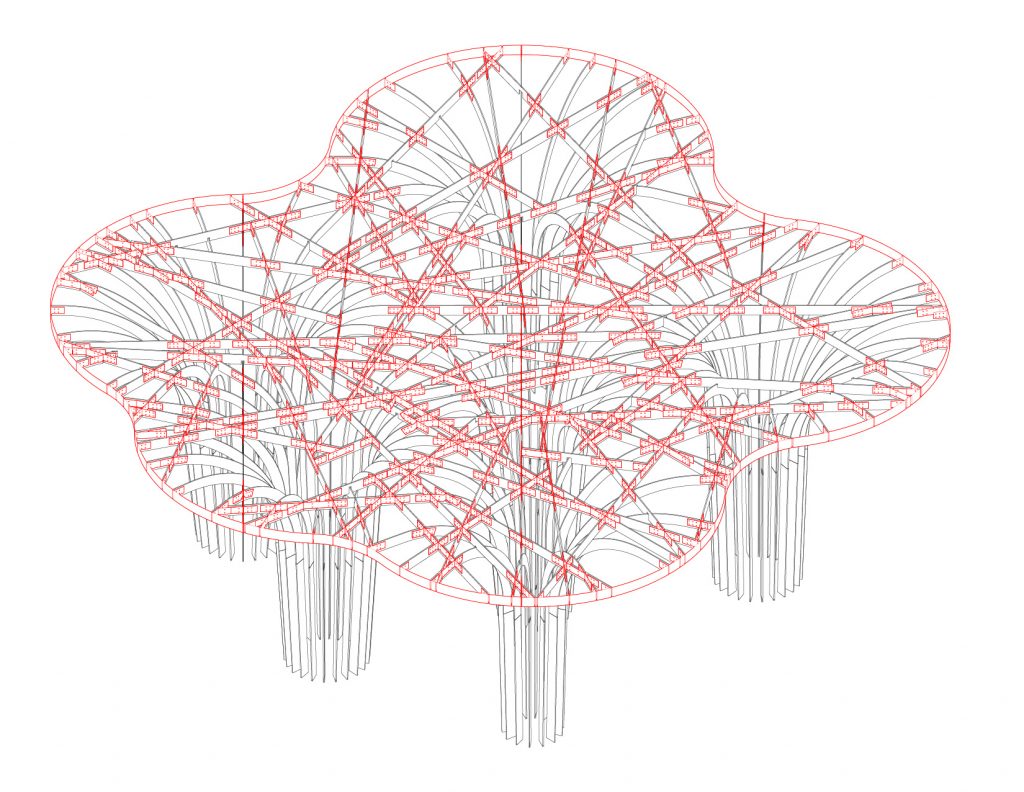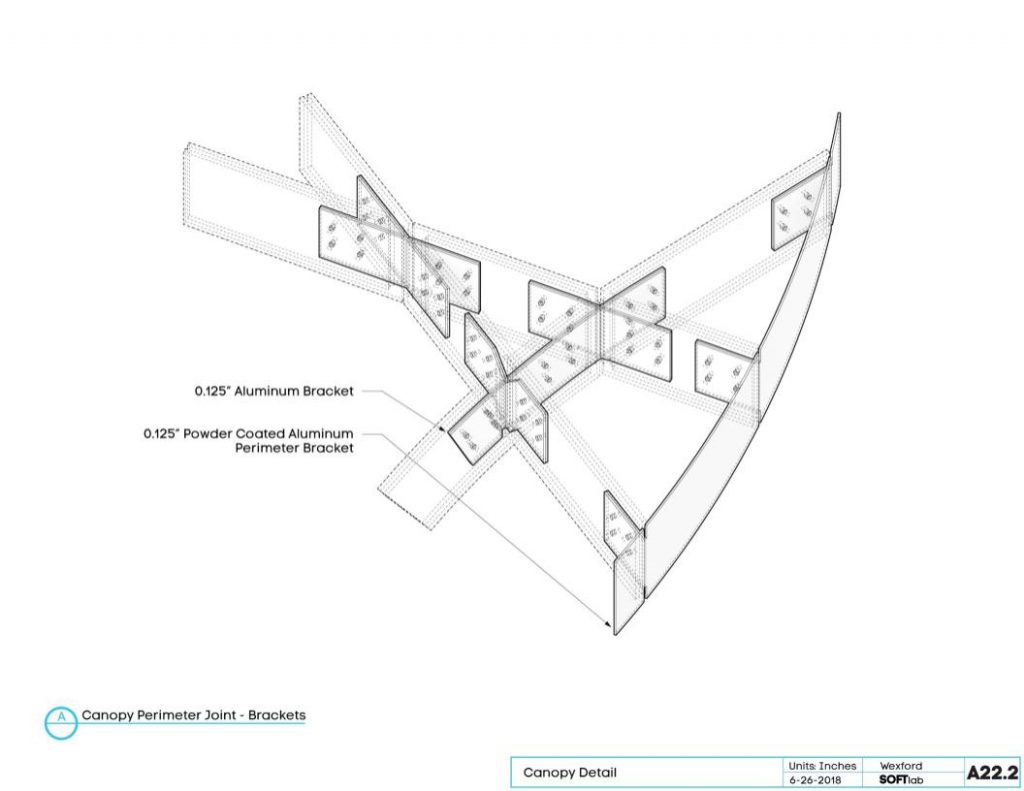Some of our projects are more based on a system that doesn’t require a discrete design solution. For instance with Spectral Grove the design intent was to “weave” the trunks together and produce a canopy of an unexpected mix of colors. The intention was to produce what appears to be an idiosyncratic intersection of elements and the redundancy insured there would be structural stability with almost any configuration, but the actual configuration beyond that was not so important to us. The only condition we really wanted to reduce were small segments and acute angles between segments. This was driven by the difficulty inherent in fabricating those conditions. Without a particular configuration in mind, we were able to use Galapagos in grasshopper to find a configuration that is optimized (includes least amount of acute angles and short segments). Galapagos applies evolutionary computing which uses goal based criteria to find solutions. In this case we used a “divide and conquer strategy” where Galapagos creates a random field of solutions, finds the best solution in that field, zooms in to that solution, and then finds random solutions within a certain deviation from that solution. This process is repeated until an acceptable solution is found.

The above drawing shows the final design solution for the woven canopy of Spectral Grove. The segments are connected with around 1200 custom cut and bent stainless steel brackets that connect custom powder coated segments of aluminum. Each bracket is generated three dimensionally from the rhino model. The process of adding the fastener holes, labels, and unrolling for fabrication is all automated. Each bracket is laser cut and etched with labels per part, but also etched with a bend line and angle so the need angle can be entered and lined up on the break for each part. The video to left shows the range of the brackets and the corresponding flat cut file.
